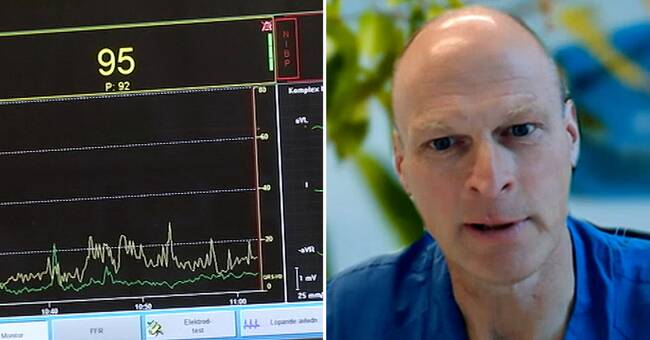Acute myocardial infarction is the most common cause of death in Sweden.
A heart attack is caused by vessels near the heart for some reason becoming clogged and stopping blood flow to the heart.
On average, three people per hour have a heart attack.
To understand more about who is affected and why, the researchers examined the coronary arteries in 25,000 people using computed tomography where you see vessels and tissues.
Today, the first part of this comprehensive study is published.
The study shows that four out of ten people (if you combine men and women) between the ages of 50 and 64 have vessels in which you can see plaque (a layer of fat) and thus run an increased risk of having a heart attack.
Men 10 years before women
- That there are so many middle-aged people who have obese vessels is startling, even though we may not be surprised, says Göran Bergström, professor of medicine at the University of Gothenburg and lead author of the study published today in Circulation.
- We clearly see that gender and age are crucial.
Men are at greater risk than women and men's vessels age 10 years earlier than women's vessels.
According to Göran Bergström, no previous comprehensive study has been conducted on the cardiovascular health of healthy individuals.
If you look at only the men in the higher age range, 60-64 years, it is almost 70 percent of the men who have atherosclerotic vessels and thus run an increased risk of heart attack.
Keep track of blood pressure and weight
- What we also see in the study is that risk factors such as obesity, smoking, high blood pressure and cholesterol are clearly linked to poorer vascular health, says Göran Bergström.
For those who want to reduce their risk of suffering a heart attack, it is important, as in so many other cases, to keep track of precisely these risk factors.
- Unfortunately, today you can not ask for a vascular examination to find out if you belong to this risk group, says Göran Bergström.
However, you can keep track of your blood pressure and cholesterol levels and quit smoking if you want to reduce the risk of heart attack.
The study is the result of a collaboration between 6 different universities in Sweden where a total of 30,000 individuals' health is monitored for several years.

